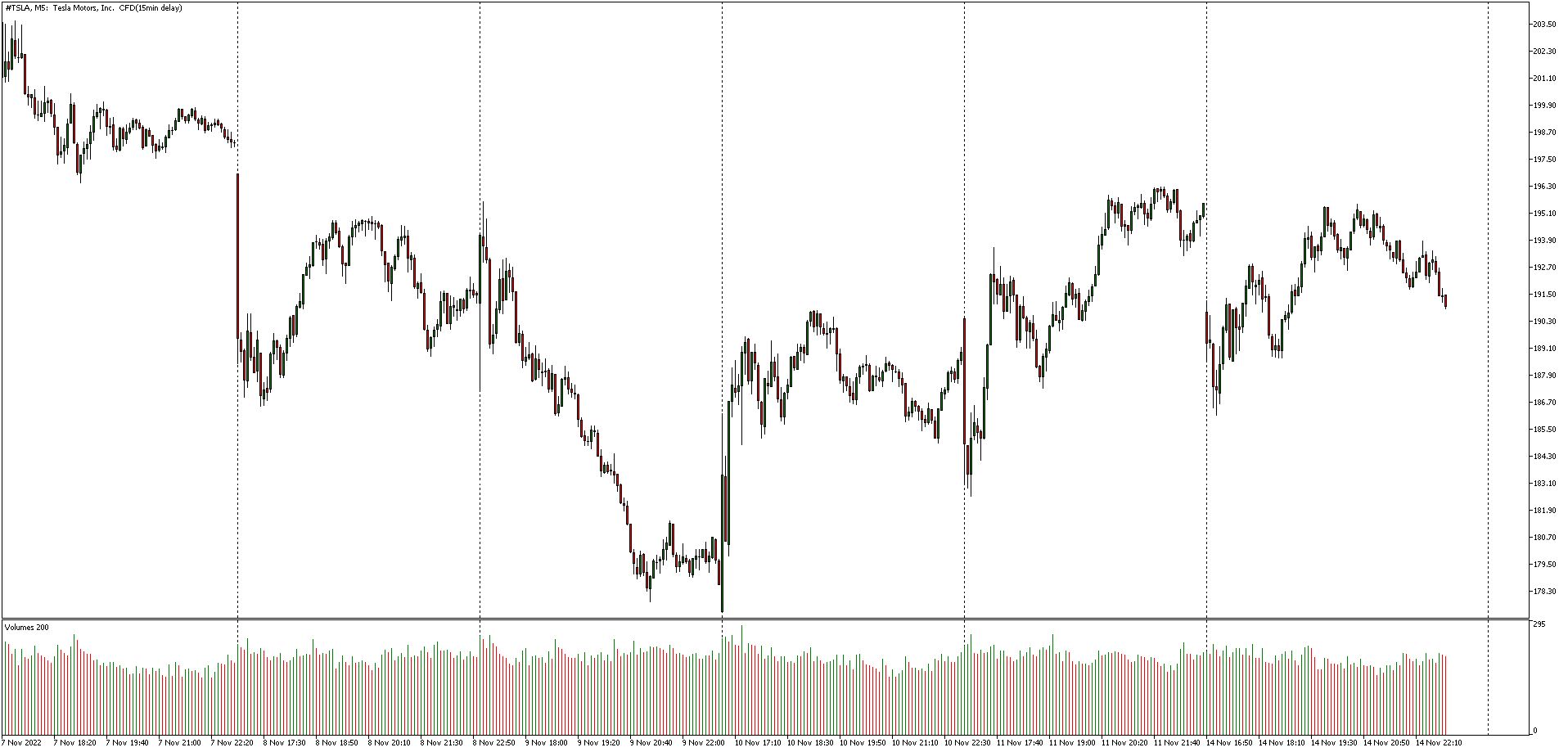Introduction
Welcome to the exciting world of penny stock trading! If you’re looking to venture into the stock market and potentially make significant profits with smaller investments, then penny stocks are worth exploring. In this article, we’ll break down the basics of penny stock trading and provide you with valuable insights and tips to get you started on your trading journey.
Penny stocks are essentially stocks of companies with low market capitalization and share prices, usually trading under $5 per share. These stocks often represent smaller, emerging companies that may have the potential for rapid growth but also carry a higher level of risk.
The allure of penny stocks lies in the possibility of enormous gains in a relatively short period. Due to their low prices, even a small fluctuation in the stock price can result in significant percentage gains. This potential for quick profits has attracted many novice traders and investors to dive into the world of penny stocks.
However, it’s important to note that penny stocks are not without risks. Due to the nature of these stocks, they can be highly volatile, susceptible to manipulation, and often lack sufficient financial information and regulatory oversight. It’s essential to approach penny stock trading with caution and the right strategies to mitigate the risks involved.
Before jumping into the world of penny stock trading, it’s crucial to educate yourself about the market, develop a sound trading plan, and be prepared to invest time and effort into research and analysis. With the right knowledge and approach, penny stock trading can be a rewarding endeavor.
Throughout this article, we’ll guide you through the process of getting started with penny stock trading, including choosing a broker, researching penny stocks, creating a trading plan, analyzing penny stock charts, and implementing effective trading strategies. We’ll also share some valuable tips to help you succeed in penny stock trading and discuss common mistakes to avoid.
Remember, penny stock trading requires patience, discipline, and continuous learning. It’s a dynamic market that requires you to adapt and refine your strategies as you gain experience. So, let’s dive in and explore the world of penny stock trading together!
What are Penny Stocks?
Penny stocks refer to stocks of small, low-priced companies that trade for less than $5 per share. These stocks are typically associated with companies that have a market capitalization of less than a few hundred million dollars. While penny stocks may seem enticing due to their low prices, it’s important to understand the inherent risks and challenges involved in trading them.
Unlike established companies listed on major exchanges, penny stocks often trade on over-the-counter (OTC) markets or on smaller exchanges. They may also be referred to as micro-cap stocks or small-cap stocks. Penny stocks are often characterized by thin trading volumes, meaning that there may be limited liquidity in the market for these stocks.
One key factor to keep in mind when considering investing in penny stocks is their higher level of volatility. Due to their lower market capitalization and trading volume, penny stocks can experience significant price swings in short periods. While this volatility can present opportunities for substantial gains, it also exposes traders to higher risks.
It’s essential to understand that penny stocks carry a greater risk of fraud and market manipulation than larger, more established stocks. These stocks are often susceptible to “pump and dump” schemes, where fraudsters artificially inflate the price of a stock through false or misleading information and then sell their shares at a profit, leaving unsuspecting investors with significant losses.
Furthermore, investing in penny stocks can be challenging due to the limited amount of public information available about these companies. Unlike larger publicly traded companies that are required to disclose financial information, penny stock companies may have limited or no regulatory reporting requirements. This lack of transparency makes it crucial for traders to conduct thorough research and due diligence before investing in any penny stock.
Overall, penny stocks can offer opportunities for substantial gains but also carry a significant amount of risk. They require careful analysis, research, and risk management strategies in order to navigate the market successfully. It’s important to approach penny stock trading with a realistic mindset and be aware of the potential pitfalls involved.
In the following sections, we will explore the benefits and risks of trading penny stocks in more detail, as well as provide guidance on getting started and implementing effective trading strategies. By equipping yourself with the right knowledge and tools, you can improve your chances of success in the world of penny stock trading.
Benefits and Risks of Trading Penny Stocks
Trading penny stocks comes with its own set of benefits and risks. Understanding these factors can help you make informed decisions and manage your investments effectively. Let’s take a closer look at the benefits and risks associated with trading penny stocks.
Benefits of Trading Penny Stocks:
- Potential for High Returns: Penny stocks have the potential to generate significant returns on investment. Due to their low prices, even a small increase in the stock price can result in substantial percentage gains.
- Lower Barrier to Entry: Compared to larger stocks, penny stocks offer a lower barrier to entry for traders with smaller capital. This allows individuals with limited funds to participate in the stock market and potentially achieve substantial profits.
- Opportunities for Rapid Growth: Penny stocks are often associated with emerging companies that have the potential for rapid growth. Identifying such companies early on can lead to substantial gains as the company grows and expands.
- Flexibility in Trading Strategies: The lower trading volumes and liquidity of penny stocks can provide more flexibility in trading strategies. Traders can buy and sell stocks quickly, taking advantage of short-term price fluctuations.
Risks of Trading Penny Stocks:
- High Level of Volatility: Penny stocks are notoriously volatile, meaning their prices can fluctuate dramatically in short periods. This volatility increases the risk of substantial losses if trades are not carefully managed.
- Lack of Regulation and Transparency: Penny stocks are often listed on smaller exchanges or traded over-the-counter, which has less regulatory oversight compared to major exchanges. This lack of regulation and transparency makes penny stocks more susceptible to fraud and market manipulation.
- Limited Financial Information: Many penny stock companies are not required to provide the same level of financial reporting as larger publicly traded companies. This makes it challenging for traders to gather accurate and reliable information about the company’s financial health, hindering their ability to make informed investment decisions.
- Higher Risk of Illiquid Investments: Due to lower trading volumes, penny stocks can be illiquid, meaning it may be difficult to buy or sell shares at desired prices. This lack of liquidity can result in slippage and may impact the execution of trading strategies.
Understanding the benefits and risks of trading penny stocks is crucial for managing your investments effectively. As a trader, it’s important to conduct thorough research, stay informed about market trends, and develop a solid risk management strategy. By doing so, you can increase your potential for success and navigate the volatile world of penny stocks more confidently.
Getting Started
Getting started with penny stock trading requires careful planning and preparation. Here are some essential steps to follow as you embark on your trading journey:
Educate Yourself: Before diving into penny stock trading, it’s crucial to educate yourself about the stock market, trading strategies, and the specific risks and challenges associated with penny stocks. Read books, attend seminars, and take online courses to enhance your knowledge and understanding of the market.
Set Clear Goals: Determine your goals and objectives for trading penny stocks. Are you looking for short-term gains or long-term investments? Identifying your goals will help you develop a trading plan and make informed decisions based on your desired outcomes.
Define Your Risk Tolerance: Understand how much risk you are willing to take and the maximum amount you are comfortable losing in a trade. Having a clear understanding of your risk tolerance will help you manage your trades and make decisions that align with your risk appetite.
Choose the Right Broker: Selecting a reputable and reliable broker is crucial for penny stock trading. Look for brokers that specialize in penny stocks and offer low commissions, a user-friendly trading platform, and access to research tools and educational resources.
Open a Trading Account: Once you’ve chosen a broker, open a trading account. Provide the necessary information and complete the account setup process as required by your chosen broker. Make sure to review and understand the terms and conditions of the brokerage account.
Allocate Capital: Decide how much capital you are willing to allocate for penny stock trading. Consider your financial situation, risk tolerance, and trading goals when determining the amount of capital to invest. It’s generally recommended to start with a small portion of your overall investment portfolio until you gain experience and confidence in penny stock trading.
Create a Trading Plan: Develop a well-defined trading plan that outlines your trading strategies, entry and exit points, risk management techniques, and goals. A trading plan acts as a roadmap for your trades, helping you stay disciplined and focused while navigating the complex penny stock market.
Practice with Paper Trading: If you’re new to trading or want to test your strategies without risking real money, consider practicing with paper trading. Many brokers offer virtual trading accounts where you can simulate trades using virtual money. This allows you to gain experience and confidence before trading with real capital.
Start Researching: Research is key to successful penny stock trading. Dive into the market and start researching potential penny stocks of interest. Analyze financial statements, industry trends, company news, and any available information that can help you make informed decisions. Be diligent in your research, as it plays a vital role in identifying potential opportunities and mitigating risks.
Stay Informed: Stay up-to-date with market news, industry trends, and any relevant updates that may impact your penny stock investments. Subscribe to financial news websites, follow reputable traders and analysts, and join online trading communities to stay informed about the latest developments in the penny stock market.
Remember, getting started with penny stock trading requires patience, continuous learning, and a disciplined approach. It’s important to develop your own trading style and strategies based on your risk tolerance and market insights. By following these steps and staying committed to your goals, you’ll be on your way to becoming a more confident and successful penny stock trader.
Choosing a Broker
Choosing the right broker is a crucial step when it comes to penny stock trading. A reliable and reputable broker can make a significant difference in your trading experience and success. Here are some factors to consider when selecting a broker:
Specialization in Penny Stocks: Look for brokers that specialize in penny stock trading. These brokers typically have experience and knowledge specific to the penny stock market, providing you with valuable insights and tools tailored to trading these stocks.
Low Commissions: Consider the commission structure offered by the broker. Since penny stocks are often traded in smaller volumes, high commission fees can eat into your profits. Look for brokers that offer competitive commission rates, especially for penny stock trades.
Accessible Trading Platform: A user-friendly and efficient trading platform is essential for executing trades swiftly and accurately. Ensure that the broker offers a platform that is easy to navigate, provides real-time data, advanced charting tools, and order execution functionality.
Research and Education Resources: Look for brokers that provide comprehensive research and educational resources specific to penny stocks. Access to analyst reports, market data, and educational materials can significantly enhance your understanding and decision-making process in penny stock trading.
Customer Support: Consider the customer support services offered by the broker. Efficient and responsive customer support can be crucial when you encounter issues with your trading account or have questions regarding the trading platform. Look for brokers that offer multiple support channels, such as phone, email, and live chat.
Risk Management Tools: Risk management is vital in penny stock trading. Make sure the broker provides risk management tools like stop orders and trailing stop orders to help you control your risk exposure and protect your investments.
Account Requirements: Review the account minimums and requirements set by the broker. Some brokers may have specific criteria, such as minimum deposit amounts or minimum trading volumes, which you need to meet to open and maintain your account.
Regulatory Compliance: Verify that the broker is regulated by a reputable regulatory authority. Regulation ensures that the broker follows industry standards and adheres to specific guidelines to protect investor interests. Consider brokers that are registered with regulatory bodies such as the Securities and Exchange Commission (SEC) in the United States.
Reviews and Reputation: Take the time to research and read reviews about the broker. Look for feedback from other traders and investors to gauge their experience with the broker’s services. Consider reputable sources such as online forums, trading communities, and independent review websites.
By carefully considering these factors, you can choose a broker that aligns with your trading needs and preferences. Remember that the choice of broker can have a significant impact on your trading success, so take the time to evaluate and compare different options before making a decision.
Researching Penny Stocks
Thorough research is a critical step in successful penny stock trading. The more information you gather about a penny stock, the better equipped you will be to make informed decisions. Here are some key aspects to consider when researching penny stocks:
Financial Statements: Analyzing a company’s financial statements is essential for understanding its financial health. Look for information such as revenue, expenses, earnings per share (EPS), debt levels, and cash flow. Pay attention to trends over time and compare the company’s financial performance to its competitors or industry benchmarks.
Company News and Press Releases: Stay updated with the latest news and press releases related to the penny stock you are researching. Company announcements, product developments, earnings releases, and industry updates can provide valuable insights into the company’s operations, growth potential, and any upcoming catalysts that may impact the stock price.
Industry and Market Trends: Familiarize yourself with the industry in which the penny stock operates. Understand the market trends, competition landscape, and any emerging opportunities or challenges. This knowledge will provide context to the company’s position within the industry and help you gauge its potential for growth.
Management Team: Research the management team behind the penny stock. Look into their experience, track record, and credentials. A strong and competent management team can greatly influence the success of a company and its ability to execute its business strategy.
Company Fundamentals: Dig deeper into the company’s business model, products or services, customer base, and competitive advantage. Assess the company’s strengths, weaknesses, opportunities, and threats (SWOT analysis) to evaluate its overall viability and potential for growth.
Regulatory Filings: Explore regulatory filings such as quarterly and annual reports, Form 10-K, Form 10-Q, and any other filings required by the regulatory authorities. These filings provide insights into the company’s financials, operations, risks, and corporate governance practices.
Analyst Reports and Recommendations: Review analyst reports and recommendations from trusted sources. Analysts often provide insights and forecasts based on their analysis of the company, industry trends, and market conditions. While it’s important to consider analyst opinions, always conduct your own due diligence and make independent decisions.
Trading Volume and Liquidity: Assess the trading volume and liquidity of the penny stock. Higher trading volumes and liquidity indicate a more active market with greater opportunities for buying and selling shares without significant price impact. Lower liquidity can make it more challenging to execute trades at desired prices.
Technical Analysis: Utilize technical analysis techniques to analyze the penny stock’s price patterns, trends, support and resistance levels, and indicators such as moving averages and oscillators. Technical analysis can provide insights into potential entry and exit points for your trades.
Social Media and Online Communities: Participate in relevant online communities, forums, and social media groups to gain insights from other traders and investors. Engaging in discussions and sharing knowledge can help you gather different perspectives and stay updated on market trends and news.
Remember, conducting thorough research is an ongoing process. The more information you gather and analyze, the better equipped you will be to make informed decisions. Keep track of your research findings and use them as a foundation for your trading strategies and investment decisions in the world of penny stocks.
Creating a Trading Plan
A well-defined trading plan is crucial for success in penny stock trading. It serves as a roadmap, guiding your decision-making process and helping you stay disciplined in the ever-changing market. Here are key elements to consider when creating your trading plan:
Set Clear Goals: Determine your trading goals, whether they’re focused on short-term gains, long-term investments, or a combination of both. Your goals will help shape your trading strategies and risk management techniques.
Define Your Risk Tolerance: Determine how much risk you are willing to take on each trade and set your risk tolerance levels. This includes the maximum amount of capital you’re willing to risk on a single trade and the percentage of your portfolio you’re willing to allocate to penny stocks.
Choose Your Trading Strategy: Decide on the trading strategies you will employ based on your trading goals and risk tolerance. Will you focus on momentum trading, swing trading, or value investing? Will you primarily rely on technical analysis or a combination of fundamental and technical analysis?
Entry and Exit Criteria: Establish clear entry and exit criteria for your trades. Determine the specific conditions or indicators you will use to identify potential entry points (e.g., breakouts, pullbacks) and exit points (e.g., stop loss levels, profit targets).
Risk Management Techniques: Develop a risk management plan that includes techniques for managing your risk exposure. Determine where you will set your stop-loss orders to protect yourself from significant losses and how you will adjust your position sizes based on the risk-reward ratio of each trade.
Trading Rules: Establish a set of trading rules that you will follow consistently. These rules may include factors such as the maximum number of trades you will make in a day, the maximum percentage of your portfolio you will risk on a single trade, and the criteria for reviewing and adjusting your trading plan periodically.
Record Keeping: Develop a system for keeping records of your trades, including entry and exit points, trade sizes, profit or loss, and any notes or observations. Maintaining detailed records will allow you to review your trading performance, identify patterns, and make necessary adjustments to your strategies.
Continuous Learning and Improvement: Commit to continuous learning and improvement as a trader. Stay updated with market trends, explore new trading strategies, and seek opportunities to enhance your skills and knowledge through books, courses, webinars, and mentorship.
Emotional Control: Develop a mindset that allows you to maintain emotional control and make rational decisions in the face of market volatility and uncertainty. This includes managing fear, greed, and impulsive behavior. Employ techniques such as meditation, self-reflection, and practicing patience to ensure disciplined trading.
Periodic Evaluation and Review: Regularly evaluate and review your trading plan to ensure its effectiveness. Identify strengths and weaknesses in your strategies, refine your trading rules if necessary, and adjust your goals and risk tolerance as your experience and knowledge evolve.
Creating a trading plan is a dynamic process that requires constant evaluation and adjustment. As you gain experience and learn from your trades, you may need to modify your plan accordingly. Remember, a well-structured trading plan increases your chances of making consistent and informed decisions in the volatile world of penny stock trading.
Analyzing Penny Stock Charts
Analyzing penny stock charts is a crucial component of successful trading. It allows you to identify patterns, trends, and potential entry and exit points for your trades. Here are key aspects to consider when analyzing penny stock charts:
Candlestick Patterns: Candlestick charts provide valuable information about the price action of a penny stock. Look for various candlestick patterns such as dojis, bullish/bearish engulfing patterns, hammer, and shooting star patterns. These patterns can indicate potential reversals or continuation of trends.
Trend Analysis: Identify the prevailing trend in the penny stock. Is it in an uptrend, downtrend, or trading in a range? Use trend lines, moving averages, and other trend indicators to help you determine the direction of the stock’s price movement.
Support and Resistance Levels: Determine the key support and resistance levels on the penny stock chart. These levels represent price levels where the stock has historically had difficulty moving below (support) or above (resistance). Breakouts above resistance or breakdowns below support can signal potential buying or selling opportunities.
Volume Analysis: Analyze the trading volume accompanying price movements in the penny stock. Higher volume during price rallies and lower volume during price declines can indicate the strength or weakness of a particular trend. High volume breakouts above resistance or volume spikes can provide confirmation of potential price moves.
Indicators and Oscillators: Utilize technical indicators and oscillators to gain further insights into the penny stock’s price momentum and potential reversals. Commonly used indicators include moving averages, relative strength index (RSI), stochastic oscillator, and MACD (Moving Average Convergence Divergence).
Chart Patterns: Identify chart patterns such as triangles, flags, head and shoulders, and double tops/bottoms. These patterns can indicate potential trend reversals or continuation and may provide valuable entry and exit points for your trades.
Timeframes: Consider analyzing penny stock charts using multiple timeframes, such as daily, weekly, and intraday charts. This allows you to gain a broader perspective on the stock’s price action and identify trends across different timeframes.
Confirmation from Other Indicators: Look for confirmation signals from multiple indicators or chart patterns. When different indicators align and provide similar signals, it increases the probability of a successful trade. Consider using a combination of technical and fundamental analysis to strengthen your decision-making process.
Backtesting and Practice: Test your trading strategies on historical chart data to assess their effectiveness. Backtesting involves applying your trading rules to past price movements to see how your strategy would have performed. Additionally, practice analyzing real-time penny stock charts and compare your analysis to the actual price movements to refine your skills.
Remember, analyzing penny stock charts is both an art and a science. It requires practice, experience, and continuous learning to improve your skills. Combine your chart analysis with fundamental research and risk management techniques to develop a well-rounded approach to penny stock trading.
Trading Strategies for Penny Stocks
When it comes to trading penny stocks, having a well-defined trading strategy is essential. Here are some popular trading strategies that can be effective when trading penny stocks:
Momentum Trading: Momentum trading involves capitalizing on the short-term price momentum of a penny stock. Traders look for stocks with increasing trading volume and price movement, aiming to ride the upward momentum for quick profits. They often rely on technical indicators such as moving averages, RSI, and volume spikes to identify potential entry and exit points.
Swing Trading: Swing trading involves holding a penny stock for a few days to weeks, aiming to capture short-term price swings. Traders look for stocks with clear support and resistance levels and aim to buy near support and sell near resistance. They may also use technical indicators and chart patterns to time their trades.
Breakout Trading: Breakout trading involves entering a trade when a penny stock breaks above a key resistance level or below a key support level with high volume. Traders anticipate continued price movement in the direction of the breakout and may use additional indicators or chart patterns to confirm their entry and manage risk.
Contrarian Trading: Contrarian trading involves taking positions opposite to the prevailing market sentiment. Traders look for oversold penny stocks that have experienced significant price declines and may be due for a reversal. They rely on technical indicators such as RSI and oversold/overbought conditions to identify potential buying opportunities.
Pullback Trading: Pullback trading involves entering a trade when a penny stock pulls back from its recent high or low point within an established trend. Traders aim to buy during the pullback in anticipation of the resumption of the prevailing trend. They often use technical indicators or oscillators to identify oversold or overbought conditions during the pullback.
Mean Reversion Trading: Mean reversion trading involves taking positions based on the expectation that price will revert to its average or mean value after deviating from it. Traders look for penny stocks that have experienced significant price spikes or declines and anticipate a correction back towards the mean. They may use technical indicators or oscillators to identify oversold or overbought conditions.
News-Based Trading: News-based trading involves capitalizing on market-moving news and announcements related to a specific penny stock. Traders actively follow news sources and company announcements to identify stocks that are likely to experience significant price movements as a result of the news. They aim to enter trades quickly to take advantage of the momentum generated by the news.
Scalping: Scalping is a short-term trading strategy that involves making multiple quick trades within a day to capitalize on small price movements. Traders focus on stocks with high trading volumes and narrow bid-ask spreads, aiming to profit from the bid-ask spread or small price fluctuations.
It’s important to note that trading strategies should be adapted to fit your own trading style, risk tolerance, and market conditions. It’s also recommended to combine technical analysis with fundamental analysis and risk management techniques to make well-informed trading decisions. Remember, successful trading requires continuous learning, practice, and adapting your strategies based on market dynamics.
Tips for Successful Penny Stock Trading
Penny stock trading can be a challenging endeavor, but with the right approach, you can improve your chances of success. Here are some valuable tips to keep in mind when trading penny stocks:
1. Educate Yourself: Continuously educate yourself about the stock market, trading strategies, and the specific challenges and risks associated with penny stocks. Stay up-to-date with market trends, industry news, and trading techniques to enhance your knowledge and skills.
2. Set Realistic Expectations: Set realistic expectations and avoid the temptation of get-rich-quick schemes. While penny stocks offer potential for significant gains, they also come with higher risks. Maintain a long-term perspective and focus on building consistent profits over time.
3. Practice Risk Management: Implement effective risk management techniques to protect your capital. Set appropriate stop-loss orders to limit potential losses, diversify your portfolio, and avoid risking an excessive amount of capital on a single trade.
4. Conduct Thorough Research: Perform thorough research on each penny stock before initiating a trade. Analyze financial statements, consider the company’s industry position and competitive advantage, and stay updated with news and announcements that may impact the stock’s performance.
5. Start Small: Begin with small position sizes, especially if you are new to penny stock trading. As you gain experience and confidence, you can gradually increase your position sizes. This approach helps mitigate risks and allows you to learn from your trades.
6. Be Mindful of Liquidity: Pay attention to the liquidity of the penny stock you are trading. Low liquidity can make it challenging to execute trades at desired prices and can result in wider bid-ask spreads. Focus on stocks with sufficient trading volumes to ensure smooth trade execution.
7. Stay Disciplined: Follow your trading plan and stick to your predefined strategies and rules. Avoid impulsive decisions or emotional trading based on fear or greed. Maintain discipline in both your entry and exit points, and avoid chasing hot tips or rumors without doing proper research.
8. Use Stop-Loss Orders: Utilize stop-loss orders to protect yourself from significant losses. Determine your risk tolerance and set stop-loss levels accordingly. Stick to your stop-loss levels and avoid the urge to hold onto losing positions in the hope of a turnaround.
9. Monitor Volume and Price Patterns: Keep a close eye on trading volume and price patterns. Unusual volume or price spikes, accompanied by strong momentum, may indicate potential buying or selling opportunities. These patterns can provide valuable insights into the stock’s trend and potential reversals.
10. Learn from Your Trades: Periodically review your trades, both the successful ones and the ones that didn’t turn out as expected. Analyze your mistakes, identify patterns, and learn from your experiences. Continuously refine your strategies and adjust your approach based on what you learn.
11. Stay Informed: Stay up-to-date with market news, economic indicators, and the overall market sentiment. Subscribe to reputable financial news sources, follow influential traders and investors, and participate in online trading communities to gain insights and broaden your knowledge.
12. Practice Patience: Penny stock trading requires patience. Understand that not all trades will be profitable, and it takes time to build consistent gains. Avoid impulsive decisions based on short-term market fluctuations, and have patience during periods of market uncertainty.
Remember, successful penny stock trading is a continuous learning process. Stay focused, hone your skills, and adapt your strategies as you gain experience. By implementing these tips and developing your own trading style, you can navigate the penny stock market with increased confidence and improve your chances of success.
Common Mistakes to Avoid
When trading penny stocks, it’s important to be aware of common pitfalls that can hinder your success and lead to financial losses. Here are some common mistakes to avoid when trading penny stocks:
1. Lack of Research: Failing to conduct thorough research is a major mistake in penny stock trading. Relying solely on tips, rumors, or hearsay without proper due diligence can lead to poor investment decisions. Take the time to investigate the company, its financials, industry trends, and any relevant news or regulatory filings before entering a trade.
2. Trading Based on Emotions: Allowing emotions to dictate your trading decisions is a recipe for disaster. Making impulsive trades driven by fear, greed, or herd mentality can lead to poor risk management and irrational investment choices. Stick to your trading plan, rely on objective analysis, and avoid letting emotions cloud your judgment.
3. Overlooking Liquidity: Trading illiquid penny stocks without considering liquidity can be a costly mistake. Illiquid stocks may have wider bid-ask spreads, making it difficult to enter and exit positions at desired prices. Focus on stocks with sufficient average trading volume to ensure smooth trade execution.
4. Chasing Hot Tips: Following hot tips or rumors without conducting proper research is a common mistake among novice traders. Acting on unfounded information can lead to poor investment decisions and significant losses. Always independently verify information and make informed decisions based on reliable sources.
5. Ignoring Risk Management: Neglecting proper risk management is a critical error. Failing to set stop-loss orders, not diversifying your portfolio, or risking too much capital on a single trade can expose you to unnecessary risks. Implement effective risk management techniques to protect your capital and reduce the impact of potential losses.
6. Overtrading: Overtrading, or excessively frequent trading, can be detrimental to your portfolio. Making too many trades without a clear strategy or valid reasons can lead to increased transaction costs and emotional fatigue. Focus on quality trades that align with your trading plan rather than chasing every potential opportunity.
7. Lack of Patience: Impatience can be costly in penny stock trading. Expecting quick profits or being unable to wait for the right opportunity can lead to poor decision-making. Develop patience, be disciplined in your approach, and wait for favorable setups before entering trades.
8. Failure to Keep Records: Failing to keep detailed records of your trades is a missed opportunity for learning and improvement. Keeping records allows you to evaluate your performance, identify patterns, and make necessary adjustments to your strategies. Maintain a trading journal that includes entry and exit points, trade sizes, profit or loss, and any observations or lessons learned.
9. Neglecting Fundamental Analysis: Overemphasizing technical analysis while neglecting fundamental analysis is a common mistake. Understanding the financial health of a company, its market position, and industry trends is crucial for making informed investment decisions. Balance technical analysis with a solid understanding of the company’s fundamentals.
10. Failing to Adapt: The market is dynamic, and failing to adapt to changing conditions can hinder your success. Be open to adjusting your strategies, learning from mistakes, and staying informed about market trends and developments. Stay flexible and willing to refine your approach based on new information.
Avoiding these common mistakes requires patience, discipline, and a commitment to continuous learning. By being aware of these pitfalls and making conscious efforts to avoid them, you can enhance your trading skills and improve your chances of success in the challenging world of penny stock trading.
Conclusion
Penny stock trading can be a thrilling and potentially lucrative venture for those willing to put in the time, effort, and research necessary to succeed. While it offers opportunities for significant gains, it is important to approach penny stock trading with caution, discipline, and a well-defined trading plan.
Throughout this article, we have explored various aspects of penny stock trading, including what penny stocks are, the benefits and risks involved, getting started, choosing a broker, researching penny stocks, creating a trading plan, analyzing penny stock charts, trading strategies, and common mistakes to avoid.
It’s crucial to emphasize the importance of continuous learning and adapting to changes in market conditions. As a penny stock trader, staying informed about market trends, industry news, and the financial health of companies is essential for making informed trading decisions.
Remember to conduct thorough research, both fundamentally and technically, before entering any penny stock trades. Develop a trading plan that suits your risk tolerance, define clear entry and exit criteria, and implement sound risk management techniques.
Additionally, exercise patience and discipline when trading penny stocks. Avoid succumbing to emotions, such as fear or greed, and be mindful of common mistakes like overtrading and neglecting proper risk management.
Trading penny stocks requires continuous evaluation, analysis, and adjustment of strategies based on feedback from your trades. Maintain meticulous records to track your performance and leverage past experiences for future improvements.
In conclusion, penny stock trading can be a rewarding endeavor with the potential for substantial profits. However, it is essential to approach it with the right mindset, strategies, and risk management techniques. By following the tips and guidelines outlined in this article, you can increase your chances of trading success and navigate the dynamic world of penny stocks more confidently.

























